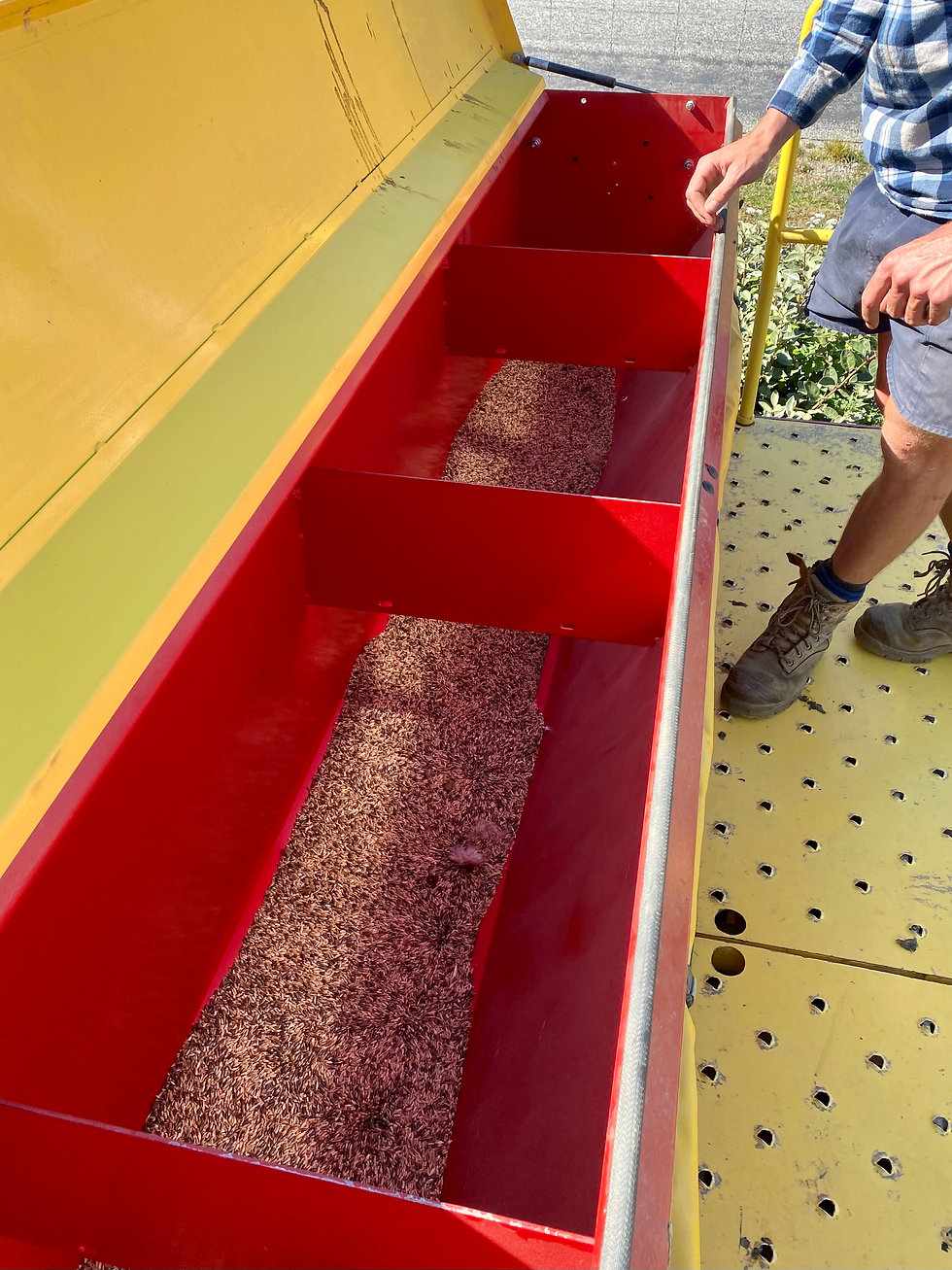Regenerative Farming: Cover Crops
- Wanaka Lavender Farm
- Feb 5, 2022
- 2 min read
Updated: Sep 26, 2024

Wānaka Lavender Farm is on an ongoing journey to look after the farm, soil and animals as well as we can. Always exploring, learning and trying out better methods of doing so.
This year, we took inspiration from our friends Tim & Camilla Rutherford who farm locally using regenerative practices, having great outcomes and securing a bright future for their land. We followed their example by implementing "Regenerative Cover Crops".

Cover cropping is a method of planting vegetation for the purpose of protecting the soil. By having a variety of plants in one area (as opposed to only having grass), it is possible to manage soil erosion, improve water retention, increase soil fertility, manage weeds and diseases, as well as increase bio-diversity.
Following the advice of Symbiosis Agriculture, we acquired a mix of 21 different types of seeds to direct drill into a selection of our paddocks where our farm animals live. Using a direct drill machine to plant seeds ensures minimal disruption to the soil, and has many other benefits.

Some of the species found in our first crops are Quinoa, Anise, Rocket, Calendula, Wild Bergamot, Spinach, Chia, Radish, Borage, Sunflowers, Peas, Oats among others. Even we thought this all sounded delicious so we were sure our farm animals were going to love it.
The result of our first cover crop is an amazing mix of food and flowers for our animals, bees and bugs above ground. Whilst simultaneously improving the health of our soil below the surface.
Next time we will be looking at planting a winter mix and then a mix of perennials that become more of a permanent pasture for the paddocks. Wānaka Lavender Farm is excited to be looking to the future harnessing the power of regenerative farming.
















Comments